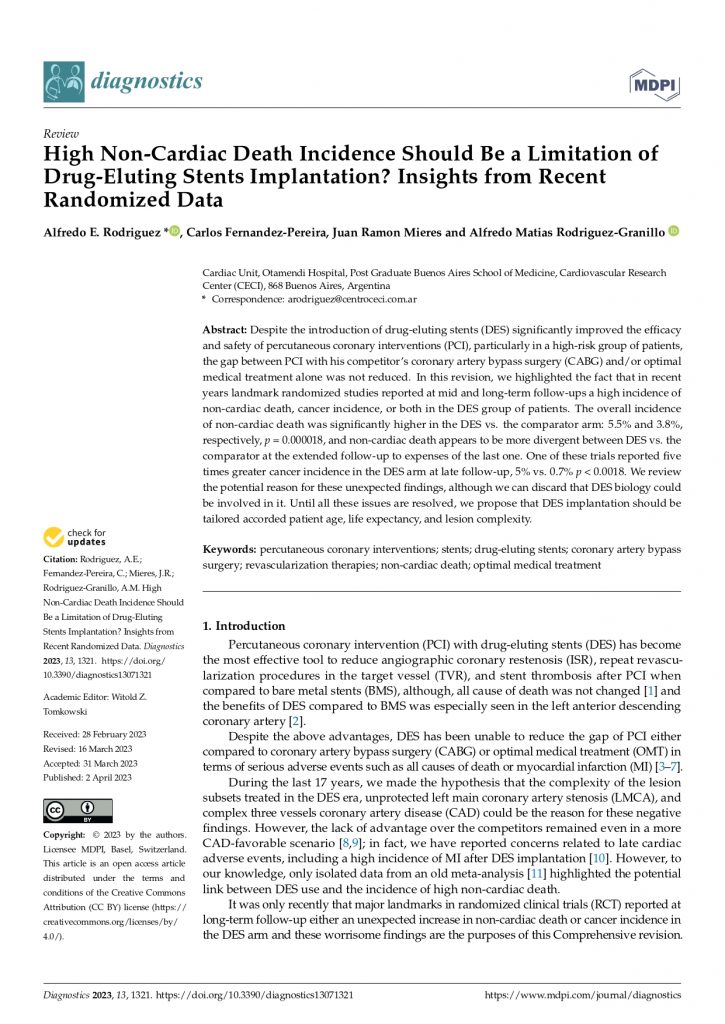
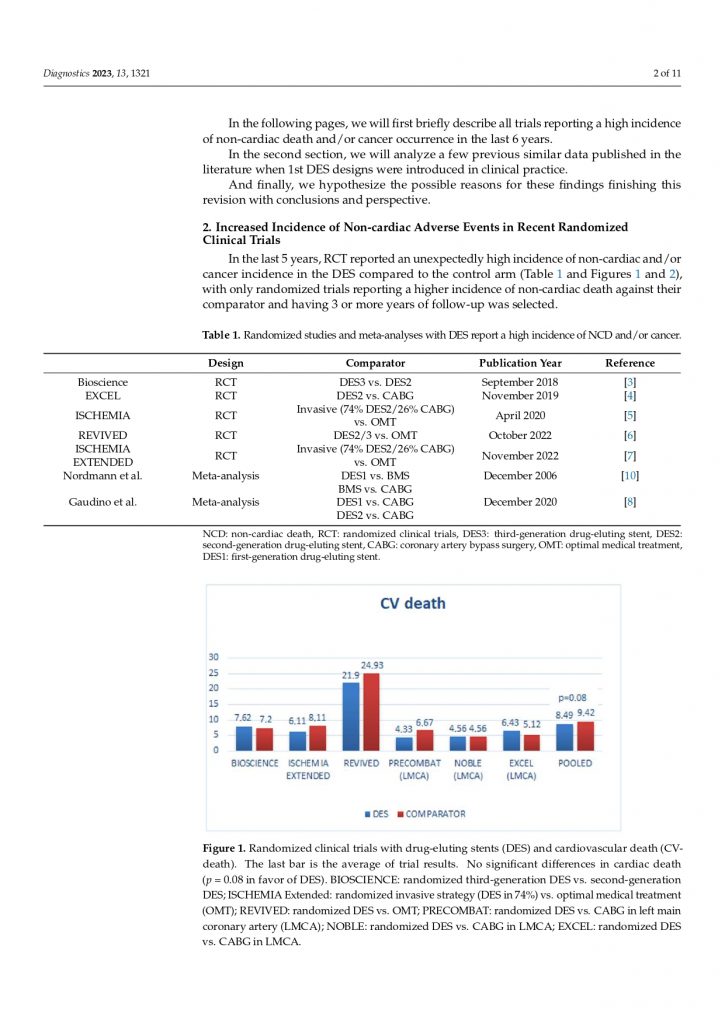

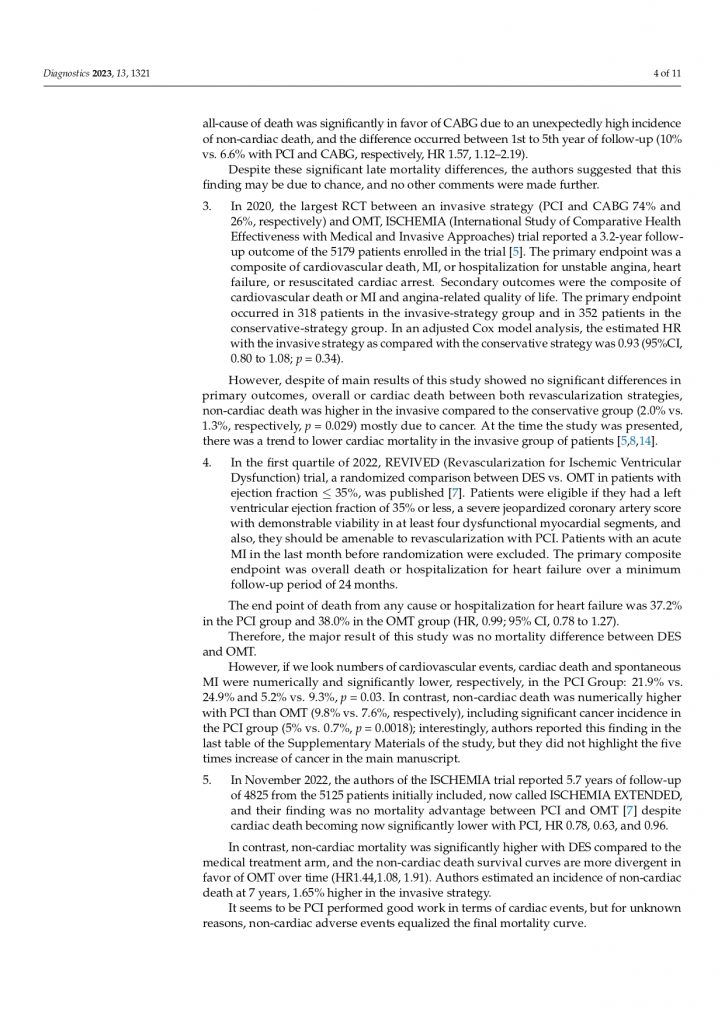
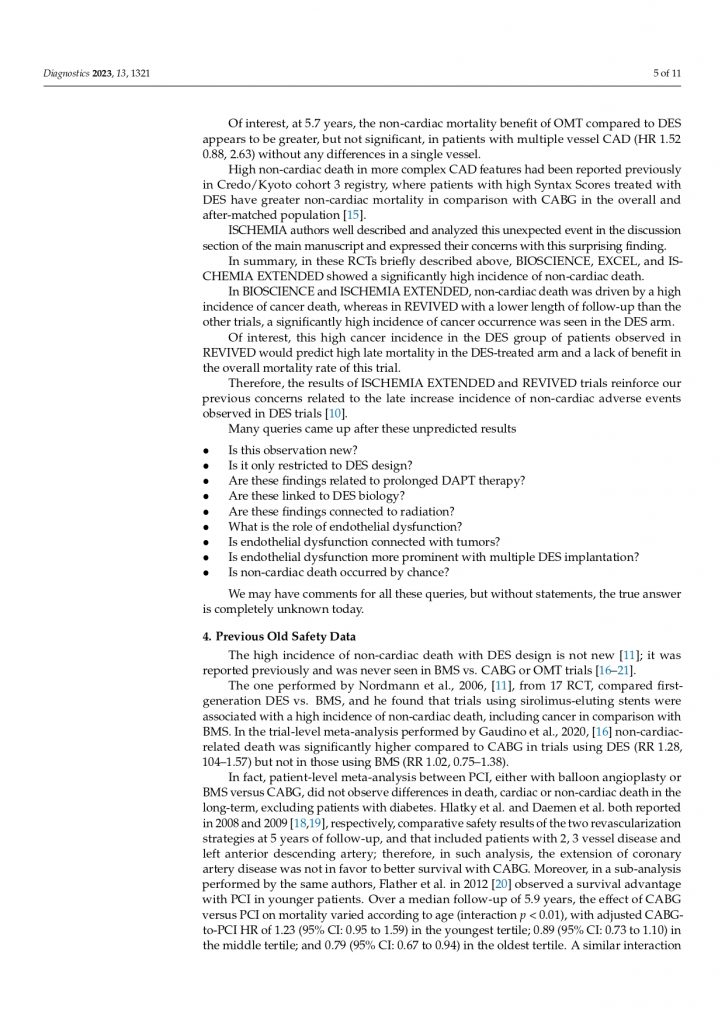

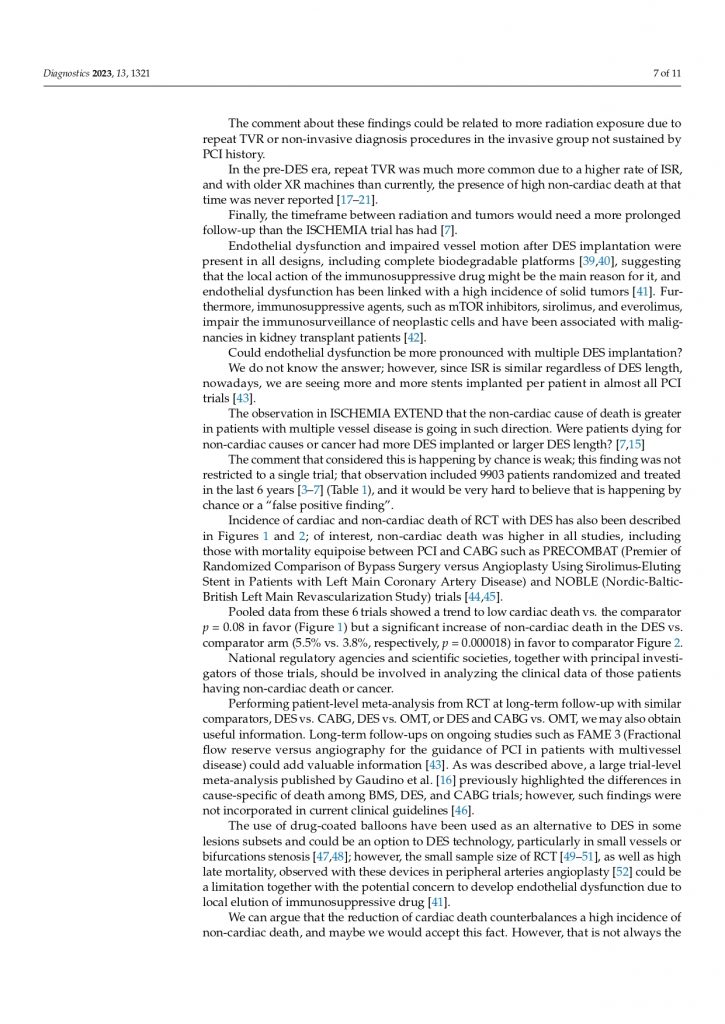


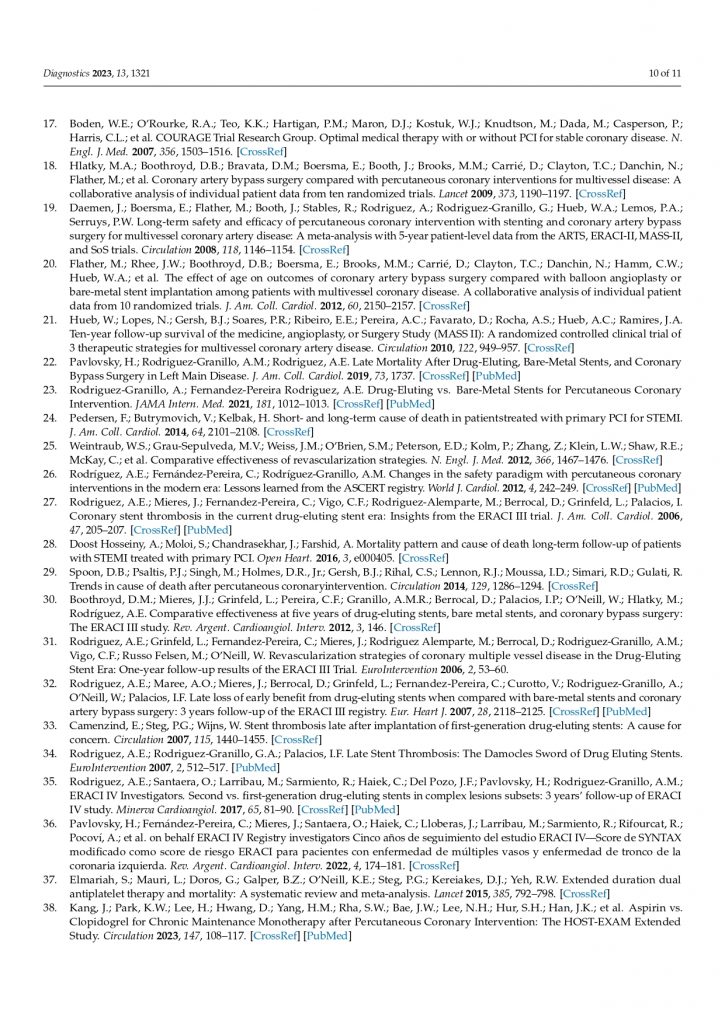
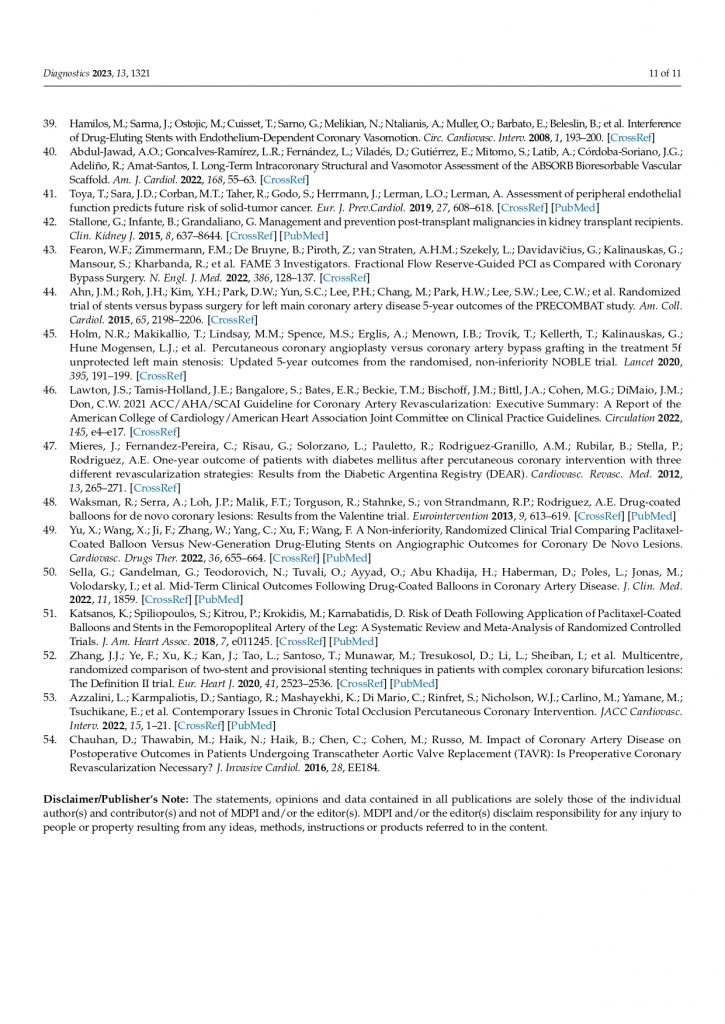
El próximo 17 de noviembre se realizará el Congreso anual del Centro de Estudios en Cardiología Intervencionista (CECI). Para verlo ingresar al siguiente link: https://videmecum.com/webinar-ceci/
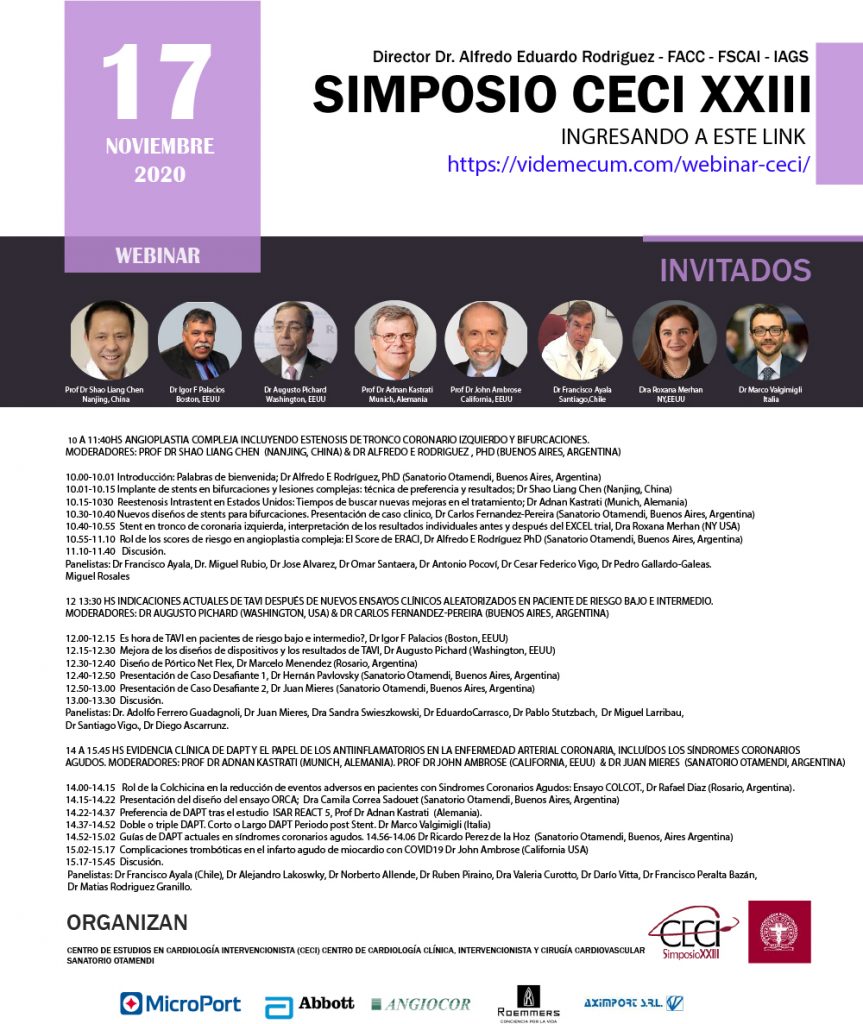
En un estudio publicado en el JACC, el FREEDOM trial evaluó la supervivencia a largo plazo de pacientes diabéticos con enfermedad multivaso sometidos a revascularización coronaria. Se randomizaron a 1900 pacientes diabéticos con enfermedad multivaso que se sometieron a PCI, con stents liberadores de sirolimus o paclitaxel, o CABG. Como resultado, en los pacientes diabéticos y con enfermedad multivaso la revascularización coronaria con CABG conduce a una menor mortalidad por todas las causas que con PCI-DES en el seguimiento a largo plazo.
Link: http://www.onlinejacc.org/content/73/6/629
Read MoreRecientes estudios relacionados al uso de thyenopiridinas, clopidogrel, prasugrel y ticagrelor, muestran resultados consistentes a favor del prasugrel en pacientes con STEMI tratados con angioplastia.
Una reciente revisión de mçultiples registros que incluyen extensos meta-análisis demuestran que tanto el prasugrel como ticagrelor tienen beneficios sobre el clopidogrel a expensas de un mayor sangrado, pero el prasugrel parece ser superior al ticagrelor en pacientes con STEMI.
Este hallazgo fue consistente en todos los registros y meta-análisis observados por estos investigadores en esta revisión:
https://www.eurekalert.org/pub_re…/2018-02/bsp-acs020718.php
https://benthamscience.com/recent-trends/RT-20182302-004/
El beneficio de prasugrel sobre ticagrelor y clopidogrel en pacientes con STEMI tambien fue reportado en un extenso registro de 89000 pacientes realizado en Gran Bretaña:
https://www.ncbi.nlm.nih.gov/pubmed/29437885
¿Son todas estas evidencias suficientes para cambiar las guÍas de tratamiento a favor de prasugrel en pacientes con STEMI?
Dado que estudios randomizados extensos con suficiente poder es muy probable que no se puedan realizar nunca, como se vio en el trial PRAGUE, los resultados de estos largos estudios observacionales y meta-análisis deberían ser tomados en cuenta debido a la enorme cantidad de datos todos a favor del prasugrel.
Read MoreEn el meeting llevado a cabo en Suzhou, con motivo del China International Therapeutics (CIT 2018), en conjunto con TCT, un caso realizado por el Dr Alfredo E. Rodriguez fue transmitido en vivo desde el First Hospital de Nanjing, China.
Se trató de una lesión en bifurcación de Tronco de Coronaria Izquierda no protegido. En esta ocasión, luego de una evaluación con IVUS y preparación con «cutting balloon», se implantó un stent farmacológico Firehawk con polímero bioabsorbible y técnica final de POT en el tronco y ostium de la arteria DA.

Este estudio, que incluyó dos estudios randomizados y 4 estudios observacionales en pacientes con estenosis aórtica y bajo riesgo clínico, mostró similar mortalidad en el período hospitalario entre TAVI y SAVR, pero una mayor sobrevida a los 3 años con SAVR.
Se incluyeron 3487 pacientes de 6 estudios, 4 de ellos observacionales y 2 randomizados. El TAVI se acompañó de menor insuficiencia renal y riesgo de sangrado pero mayores complicaciones vasculares e indicación de marcapaso definitivo.
Abstract/Summary
Background
Although transcatheter aortic valve replacement (TAVR) is officially indicated for high risk aortic stenosis (AS) patients, the procedure is increasingly being performed in patients who are not at high surgical risk, including a substantial number of low risk patients. However, data on the benefit of TAVR in this patient population is limited.
Methods
We conducted a systematic review and meta-analysis of randomized controlled trials (RCTs) and observational studies with propensity score matching (PSM) of TAVR versus surgical aortic valve replacement (SAVR) in patients who are at low surgical risk. The primary outcome was all-cause mortality. The secondary outcomes included stroke, myocardial infarction, bleeding, and various procedural complications.
Results
Six studies (2 RCTs and 4 PSM studies) totaling 3,484 patients were included. Follow-up ranged from 3 months to 3 years (median 2 years). The short-term mortality was similar with either TAVR or SAVR (2.2% for TAVR and 2.6% for SAVR, RR 0.89, 95% CI 0.56–1.41, P = 0.62), however, TAVR was associated with increased risk for intermediate-term mortality (17.2% for TAVR and 12.7% for SAVR, RR 1.45, 95% CI 1.11–1.89, P = 0.006). In terms of periprocedural complications, TAVR was associated with reduced risk for bleeding and renal failure and an increase in vascular complications and Pacemaker implantation.
Conclusions
In patients who are at low surgical risk, TAVR seems to be associated with increased mortality risk. Until more data in this population is available, SAVR should remain the treatment of choice for these patients.
http://onlinelibrary.wiley.com/doi/10.1002/ccd.27518/abstract
Read MoreUn extenso registro de Gran Bretaña muestra nuevamente los beneficios del Prasugrel sobre Ticagrelor y Clopidogrel en pacientes con infarto agudo del miocardio supra ST y tratados con angioplastia primaria.
Ante la ausencia casi definitiva de datos randomizados válidos, ¿deberán incorporarse todas estas evidencias de registros observacionales prospectivos en las guías de tratamiento?
Abstract
OBJECTIVES:
Prasugrel and ticagrelor both reduce ischaemic endpoints in high-risk acute coronary syndromes, compared with clopidogrel. However, comparative outcomes of these two newer drugs in the context of primary percutaneous coronary intervention (PCI) for ST-elevation myocardial infarction (STEMI) remains unclear. We sought to examine this question using the British Cardiovascular Interventional Society national database in patients undergoing primary PCI for STEMI.
METHODS:
Data from January 2007 to December 2014 were used to compare use of P2Y12 antiplatelet drugs in primary PCI in >89 000 patients. Statistical modelling, involving propensity matching, multivariate logistic regression (MLR) and proportional hazards modelling, was used to study the association of different antiplatelet drug use with all-cause mortality.
RESULTS:
In our main MLR analysis, prasugrel was associated with significantly lower mortality than clopidogrel at both 30 days (OR 0.87, 95% CI 0.78 to 0.97, P=0.014) and 1 year (OR 0.89, 95% CI 0.82 to 0.97, P=0.011) post PCI. Ticagrelor was not associated with any significant differences in mortality compared with clopidogrel at either 30 days (OR 1.07, 95% CI 0.95 to 1.21, P=0.237) or 1 year (OR 1.058, 95% CI 0.96 to 1.16, P=0.247). Finally, ticagrelor was associated with significantly higher mortality than prasugrel at both time points (30 days OR 1.22, 95% CI 1.03 to 1.44, P=0.020; 1 year OR 1.19 95% CI 1.04 to 1.35, P=0.01).
CONCLUSIONS:
In a cohort of over 89 000 patients undergoing primary PCI for STEMI in the UK, prasugrel is associated with a lower 30-day and 1-year mortality than clopidogrel and ticagrelor. Given that an adequately powered comparative randomised trial is unlikely to be performed, these data may have implications for routine care.
https://www.ncbi.nlm.nih.gov/pubmed/29437885
Read More
Un artículo publicado recientemente en el JAMA (Journal of the American Medical Association) destaca los beneficios de la oclusión quirúrgica del auricular izquierdo para prevenir eventos tromboembólicos en pacientes mayores con fibrilación auricular sometidos a cirugía cardíaca.
Asociación entre la oclusión del apéndice auricular izquierdo y la readmisión por tromboembolismo en pacientes con fibrilación auricular sometidos a cirugía cardíaca concomitante.
Friedman DJ, Piccini JP, Wang T, Zheng J, Malaisrie SC, Holmes DR, Suri RM, Mack MJ, Badhwar V, Jacobs JP, Gaca JG, Chow SC, Peterson ED, Brennan JM.
Key Points
Question Is surgical left atrial appendage occlusion associated with a reduction in long-term thromboembolic events?
Findings In this retrospective cohort study of 10 524 Medicare recipients with atrial fibrillation undergoing cardiac surgery, surgical left atrial appendage occlusion, compared with no surgical left atrial appendage occlusion, was significantly associated with lower risk of readmission for thromboembolism at 3 years (unadjusted, 4.2% vs 6.2%; adjusted hazard ratio, 0.67).
Meaning Surgical left atrial appendage occlusion may be of benefit in preventing thromboembolic events in older patients with atrial fibrillation undergoing cardiac surgery, although randomized trials would be necessary to provide definitive evidence.
https://www.ncbi.nlm.nih.gov/pubmed/29362794
Read More